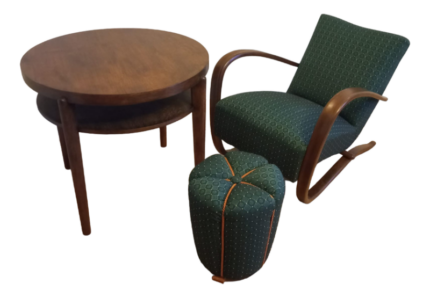Hans Zatzka (Austrian, 1859-1945) was a well known and regarded Austrian fantasy artist whose most popular and valuable works depicted figures of young maidens with angels, floral and other cheerful and warm scenes, including Orientalist themes. In the past thirty years alone, the high quality and detail of his beautiful paintings has caught the attention of International collectors and art dealers alike, creating a highly sought after market and demand for his instantly recognizable body of work.
In the late 19th and early 20th century, many of Zazka’s charming works were photographed for commercial and collectable postcards. Though no information about his works being exhibited in museums is currently available, most of Zatzka’s paintings are in private collections and, in the past century, very few of them have become available on the open market.
At the young age of eighteen Zatzka joined Austria’s Academy of Fine Arts under the leadership of Professor Blaas. For his fine early works, in 1880 he received The Golden Fügermedal award.
Zatzka, like many other artists of the era, traveled around Europe working and selling his art and, in one of his many trips to Italy, he developed a special interest in Religious themes, decorating churches with frescos as well as painting several religious scenes of Madonna’s and Child, Saints, Angels and others. In 1885 Zatzka was commissioned to paint “The Naiad of Baden” a ceiling fresco at Kurhaus Baden. Most of Zatzka’s income came from his work in religious art and special church commissions.
Numerous leading art dealers from around the world that specialize in late 19th and early 20th century European genre paintings have come to the conclusion that the painter signing his works Bernard Zatzka, Joseph Bernard or J. Bernard is almost certainly the artist Hans Zatzka. The consensus seems quite plausible when comparing works known to have been executed by Hans Zatzka together with similar works displaying the signature; Joseph Bernard, J. Bernard or Bernard Zatzka.
Lohengrin refers to the knight of the swan, hero of German versions of a legend widely known in variant forms from the European Middle Ages onward. It seems to bear some relation to the northern European folktale of “The Seven Swans,” but its actual origin is uncertain. It is also a character in German Arthurian literature. The son of Parzival (Percival), he is a knight of the Holy Grail sent in a boat pulled by swans to rescue a maiden who can never ask his identity.
Research by Claudio Boltiansky – Copyright ©
Measures: Canvas Height: 20 3/4 inches (52.7 cm)
Canvas Width: 41 3/8 inches (105.1 cm)
Frame Height: 28 1/4 inches (71.8 cm)
Frame Width: 48 3/4 inches (123.8 cm)
Depth: 2 1/2 inches (6.4 cm).
-
Creator:Hans Zatzka(Artist)
-
Dimensions:Height: 28.25 in (71.76 cm)Width: 48.75 in (123.83 cm)Depth: 2.5 in (6.35 cm)
-
Style:Belle Époque(In the Style Of)
-
Materials and Techniques:CanvasGiltwoodHand-CarvedHand-Painted
-
Place of Origin:Austria
-
Period:Late 19th Century
-
Date of Manufacture:Circa: 1890-1900’s
-
Condition:GoodRepaired: Some in-paint touch-ups visible under U.V. light. Wear consistent with age and use. Minor fading. A truly beautiful and charming painting by Hans Zatzka. Fine attention to detail and with its original giltwood frame. Some in-paint touch-ups visible under U.V. light. Please view all images.
-
Seller Location:Los Angeles, CA
-
Reference Number:Seller: Ref.: A2662Seller: LU1796232900262









































Reviews
There are no reviews yet.